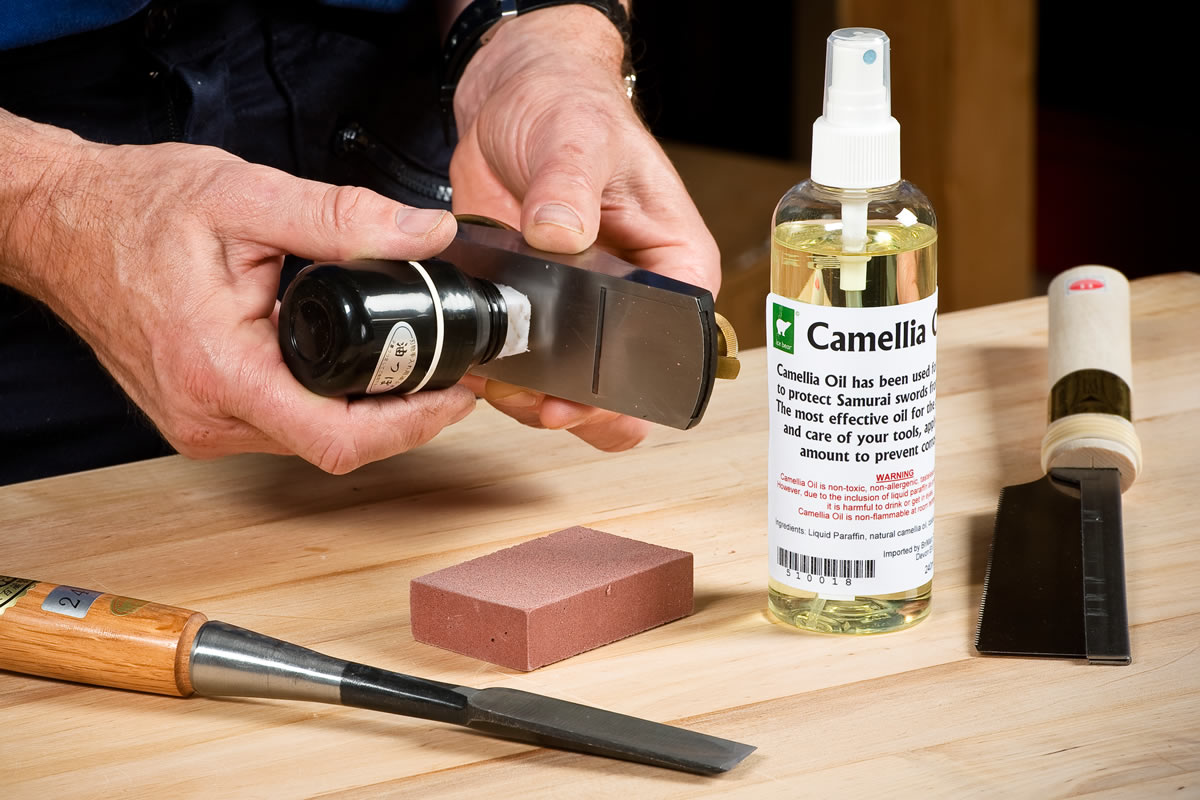

Articles
What Kind Of Oil Can You Use On Hand Tools
Modified: January 6, 2024
Discover the best articles on what kind of oil you can use on hand tools. Find out the most effective and recommended oils for maintaining your tools' performance.
(Many of the links in this article redirect to a specific reviewed product. Your purchase of these products through affiliate links helps to generate commission for Storables.com, at no extra cost. Learn more)
Introduction
Hand tools are an essential part of any DIY enthusiast or professional tradesperson’s arsenal. From wrenches and screwdrivers to hammers and pliers, these tools help us tackle various tasks and projects. However, to ensure that our hand tools perform at their best and have a long lifespan, proper maintenance is crucial. One important aspect of maintenance is using the right type of oil on hand tools.
Using oil on hand tools serves several purposes. It helps to prevent rust and corrosion, lubricates moving parts, reduces friction, and preserves the overall functionality of the tools. Additionally, applying oil regularly can make using the tools smoother and more efficient.
In this article, we will explore the different types of oils that are suitable for hand tools and discuss the factors to consider when choosing the right oil. We will also look at the proper way to apply oil on hand tools and share tips for their storage and maintenance.
Key Takeaways:
- Proper maintenance of hand tools, including choosing the right oil, regular cleaning, and lubrication, ensures longevity, functionality, and optimal performance, making DIY projects and professional tasks more efficient and enjoyable.
- By incorporating regular cleaning, lubrication, and proper storage, hand tools can remain reliable companions, serving well in DIY projects, repairs, or professional endeavors for years to come, saving time and money in the long run.
Read more: What Kind Of Steel Is Used In Hand Tools
Understanding the Importance of Using Oil on Hand Tools
Hand tools are subjected to a lot of wear and tear during use. The metal surfaces of these tools can easily rust and corrode, especially if they are exposed to moisture or harsh conditions. This can significantly shorten the lifespan of the tools and compromise their performance.
By applying oil on hand tools, we create a protective barrier against moisture and other corrosive elements. The oil forms a thin film on the metal surfaces, preventing them from coming into direct contact with moisture in the air. This greatly reduces the risk of rust and corrosion, keeping the tools in optimal condition.
Another important aspect of using oil on hand tools is lubrication. Many hand tools have moving parts, such as hinges or adjustable mechanisms. Without proper lubrication, these parts can become stiff and difficult to operate. Applying oil helps to reduce friction between the metal surfaces, allowing the tools to move smoothly and effortlessly.
In addition, using oil on hand tools can help to preserve their overall functionality. Over time, dirt, dust, and debris can accumulate on the surfaces of the tools, making them less effective. Applying oil helps to loosen and remove these particles, ensuring that the tools can perform at their best.
Furthermore, regular oiling can make using hand tools a more enjoyable experience. The smooth and well-lubricated surfaces allow for easier gripping, twisting, and turning, reducing the strain on our hands and making the work more efficient.
Overall, the importance of using oil on hand tools cannot be understated. It helps to prevent rust and corrosion, lubricates moving parts, preserves functionality, and enhances the overall performance of the tools. By incorporating regular oiling into our tool maintenance routine, we can ensure that our hand tools last longer and continue to serve us well.
Different Types of Oil Suitable for Hand Tools
When it comes to selecting the right oil for your hand tools, there are several options to consider. Each type of oil has its own characteristics and advantages, so it’s important to choose one that suits your specific needs. Here are four common types of oil that are suitable for hand tools:
- Mineral Oil: Mineral oil is a popular and affordable option for lubricating hand tools. It is derived from petroleum and has excellent lubricating properties. Mineral oil is effective in reducing friction and preventing rust and corrosion. It also penetrates into tight spaces, ensuring that all the moving parts are properly lubricated. However, it is important to note that mineral oil may leave a residue over time, which can attract dust and debris.
- Motor Oil: Motor oil is commonly used in automotive engines, but it can also be used on hand tools. It is a versatile oil that offers good lubrication and rust protection. Motor oil comes in different viscosities, so you can choose one that matches the requirements of your tools. However, keep in mind that motor oil may have additives and detergents that are not necessarily beneficial for hand tools, so it’s important to select a high-quality motor oil without unnecessary additives.
- Synthetic Oil: Synthetic oils are man-made lubricants that offer excellent performance and durability. They are formulated to resist high temperatures, provide long-lasting lubrication, and offer superior protection against rust and corrosion. Synthetic oils are often recommended for high-performance or precision hand tools, as they can withstand heavy use and extreme conditions. However, synthetic oils are generally more expensive than mineral or motor oils.
- Multi-Purpose Oil: Multi-purpose oils are designed to be used for a wide range of applications, including hand tool maintenance. These oils often contain a blend of different lubricants and additives, providing lubrication, rust protection, and cleaning properties. Multi-purpose oils are convenient and versatile, as they can be used on various types of hand tools without the need for separate products. However, it’s important to choose a high-quality multi-purpose oil to ensure optimal performance and protection.
When selecting an oil for your hand tools, consider factors such as the tool material and finish, the climate and environmental conditions you work in, any specific requirements of the tools, and your personal preference. It’s always a good idea to consult the manufacturer’s recommendations to ensure that you choose an oil that is compatible with your specific hand tools.
By selecting the right type of oil and regularly applying it to your hand tools, you can ensure that they operate smoothly, remain protected from rust and corrosion, and have a prolonged lifespan.
Mineral Oil
Mineral oil is a commonly used lubricant for hand tools. It is derived from petroleum and is known for its affordability and wide availability. Mineral oil is a versatile option that provides effective lubrication and helps prevent rust and corrosion on hand tools.
One of the primary advantages of mineral oil is its ability to reduce friction between moving parts. Applying mineral oil to the hinges, joints, or other mechanisms of hand tools ensures smooth operation and prevents stiffness or sticking. This is especially important for tools like wrenches and pliers, where ease of use is crucial.
In addition to its lubricating properties, mineral oil creates a protective barrier on the metal surfaces of hand tools. This barrier helps to prevent moisture from coming into direct contact with the metal, reducing the risk of rust and corrosion. By applying mineral oil regularly, you can effectively extend the lifespan of your hand tools and keep them in optimal condition.
Mineral oil is also known for its ability to penetrate tight spaces. This makes it particularly useful for reaching inaccessible areas within hand tools, ensuring that all moving parts receive proper lubrication. By ensuring that every nook and cranny is coated with oil, you can maintain the smooth functioning of your hand tools.
However, it is important to note that mineral oil may leave a residue over time. This residue can attract dust and debris, potentially affecting the performance of the tools. Regular cleaning and proper maintenance, including wiping off excess oil, can help mitigate this issue.
Overall, mineral oil is an affordable and effective option for lubricating and protecting hand tools. Its ability to reduce friction, prevent rust and corrosion, and penetrate tight spaces make it a popular choice among tool enthusiasts. If you’re looking for a reliable and budget-friendly oil for your hand tools, mineral oil is a great option to consider.
Motor Oil
Motor oil, although primarily used in automotive engines, can also be used as a lubricant for hand tools. It offers several benefits, making it a viable option for maintaining the functionality and longevity of your tools.
One advantage of using motor oil on hand tools is its availability in different viscosities. Viscosity refers to the oil’s resistance to flow, with higher numbers indicating thicker oil. By selecting the right viscosity, based on the specific requirements of your hand tools, you can ensure optimal lubrication and performance. For example, heavier motor oil may be more suitable for larger, more heavy-duty tools, while lighter oil can be used for smaller, precision tools.
Motor oil contains additives and detergents that enhance its lubricating properties. These additives can provide better protection against wear and tear, reduce friction, and improve the overall performance of your hand tools. However, it’s important to choose a high-quality motor oil that doesn’t contain unnecessary or harmful additives, as they may not be beneficial for your tools.
Additionally, motor oil offers good rust and corrosion protection, safeguarding your hand tools from the damaging effects of moisture and other environmental factors. This is particularly important if you work in humid or damp conditions or if you live in an area with high humidity levels.
When using motor oil on hand tools, it’s essential to apply it correctly. Make sure to apply a thin and even coat of oil, focusing on the moving parts and areas prone to friction. Avoid using excessive amounts of oil, as it may lead to accumulation and attract dirt and debris. Regular maintenance, including cleaning and wiping off excess oil, will help optimize the performance and longevity of your tools.
While motor oil is a versatile option for hand tools, it’s essential to keep in mind that not all motor oils are the same. Some motor oils contain specific additives or are designed for specific engine types, which may not be suitable for hand tools. It’s recommended to choose a high-quality motor oil without unnecessary additives and consult with the manufacturer’s recommendations to ensure compatibility.
All in all, motor oil can be a suitable lubricant for hand tools, providing effective lubrication, rust protection, and enhanced performance. By using the appropriate type and viscosity of motor oil and following proper application and maintenance practices, you can keep your hand tools in optimal condition for extended periods.
Read more: What Hand Tools Can You Bring On An Airplane
Synthetic Oil
Synthetic oil is a man-made lubricant that offers superior performance and durability for hand tools. It is specially formulated to withstand high temperatures, provide long-lasting lubrication, and offer excellent protection against rust and corrosion.
One of the main advantages of synthetic oil is its ability to maintain its properties even under extreme conditions. It can handle high temperatures without breaking down or losing its lubricating ability, making it ideal for tools that generate heat during use. Synthetic oil also has a longer lifespan compared to mineral and motor oils, meaning you won’t have to apply it as frequently.
Another benefit of synthetic oil is its superior resistance to rust and corrosion. It forms a protective barrier on the metal surfaces of hand tools, preventing moisture and other corrosive elements from coming into contact with the metal. This is especially important if you work in environments with high humidity or if your hand tools are exposed to water or moisture regularly.
Synthetic oil also offers excellent lubrication, reducing friction between moving parts and ensuring smooth operation. It effectively minimizes wear and tear, extending the lifespan of your hand tools. This is particularly beneficial for high-performance tools or precision instruments that require precise movements.
Furthermore, synthetic oil is less likely to attract dust and debris compared to mineral oil or motor oil. Its formulation typically includes additives that prevent the accumulation of particles on the tool surfaces, keeping them cleaner for longer. This can reduce the frequency of cleaning and maintenance required for your hand tools.
It’s important to note that synthetic oil generally comes at a higher price point compared to other types of oil. However, for those who prioritize optimal performance and long-term durability, the investment in synthetic oil can be well worth it.
When using synthetic oil on hand tools, apply it sparingly and evenly to ensure proper coverage. Focus on the moving parts and areas where friction occurs. Regularly wipe off any excess oil to prevent accumulation. Following the manufacturer’s recommendations for the specific synthetic oil you choose is also advisable to ensure the best results.
In summary, synthetic oil offers exceptional performance and protection for hand tools. Its ability to withstand high temperatures, provide long-lasting lubrication, and offer superior rust and corrosion resistance make it an excellent choice for those seeking top-quality lubrication for their tools.
Multi-Purpose Oil
Multi-purpose oil is a versatile option that can be used for various applications, including lubricating hand tools. It is designed to provide a combination of lubrication, rust protection, and cleaning properties, making it a convenient choice for tool maintenance.
One of the primary advantages of multi-purpose oil is its versatility. It can be used on different types of hand tools, eliminating the need for multiple products. This saves time and money, as you can use the same oil for various tasks. Whether you’re lubricating hinges on a door or gears on a power tool, multi-purpose oil can do the job effectively.
Multi-purpose oil typically contains a blend of lubricants and additives that enhance its performance. These additives help to reduce friction, providing smooth operation for your hand tools. They also provide rust and corrosion protection, preventing moisture damage and extending the lifespan of your tools.
In addition to lubrication and rust protection, multi-purpose oil can also act as a cleaning agent. It can help to loosen and remove dirt, grime, and debris that accumulate on the surfaces of your hand tools. This is especially useful for tools that are exposed to various contaminants during use. By cleaning and lubricating simultaneously, multi-purpose oil helps to maintain the overall functionality and appearance of your tools.
When using multi-purpose oil on hand tools, apply it to the appropriate areas, focusing on the moving parts and areas that require lubrication. Use a small amount of oil and ensure even coverage. Avoid excessive application, as it can lead to buildup and attract dirt. Regularly wipe off any excess oil to keep the tools clean and free from residue.
It’s important to choose a high-quality multi-purpose oil to ensure optimal performance and protection for your hand tools. Consider factors such as the specific requirements of your tools, the conditions they are used in, and any recommendations from the tool manufacturer when selecting the right multi-purpose oil for your needs.
In summary, multi-purpose oil is a convenient option for lubricating and maintaining hand tools. Its versatility, combining lubrication, rust protection, and cleaning properties, makes it an excellent choice for those looking for a single product that can serve multiple purposes. By using high-quality multi-purpose oil and applying it correctly, you can keep your hand tools in excellent condition and ensure their long-term functionality.
Factors to Consider When Choosing an Oil for Hand Tools
When selecting an oil for your hand tools, it’s important to consider several factors to ensure optimal performance and protection. Each tool may have different requirements based on its material, finish, intended use, and the environment it will be used in. Here are some key factors to consider when choosing an oil for your hand tools:
- Tool Material and Finish: Different hand tools are made from various materials, including steel, aluminum, or alloys. The material can affect the compatibility and effectiveness of the oil. Additionally, certain tools may have specific finishes, such as chrome-plating or powder coating, which require specialized oils to maintain their appearance and protect against corrosion.
- Climate and Environmental Factors: The climate and environment in which you work can influence the choice of oil for your hand tools. If you work in a humid or coastal area, where the tools are more prone to moisture exposure, selecting an oil with high rust and corrosion resistance is essential. Similarly, extreme temperature variations can impact the performance of the oil, so choose one that can withstand the specific environmental conditions.
- Specific Tool Requirements: Some hand tools have unique requirements when it comes to lubrication. For example, power tools with intricate gears may need a heavier oil to ensure proper functioning, while precision instruments may require a lighter oil to maintain delicate movements. Refer to the manufacturer’s recommendations or documentation for any specific requirements for your tools.
- Personal Preference and Usage Frequency: Consider your personal preference and the frequency with which you use the hand tools. Some oils may have a specific odor or consistency that you may prefer or dislike. Additionally, if you frequently use the tools, you may opt for an oil that offers long-lasting lubrication and requires less frequent application.
It’s also crucial to ensure that the oil you choose is compatible with the materials and finishes of your hand tools. Some oils can react with certain materials, causing damage or affecting performance. It’s always recommended to consult the manufacturer’s recommendations or conduct thorough research to select the most suitable oil for your specific hand tools.
Remember to follow proper application techniques, such as applying a thin and even coat of oil, focusing on moving parts, and wiping off any excess oil. Regular maintenance, including cleaning and reapplication as needed, will help keep your hand tools in optimal condition and prolong their lifespan.
By considering these factors and selecting the right oil for your hand tools, you can ensure that they continue to perform at their best, remain protected against rust and corrosion, and have a longer lifespan.
Tool Material and Finish
One of the key factors to consider when choosing an oil for your hand tools is the material and finish of the tools themselves. Different types of materials and finishes require specific types of oils to maintain their functionality and appearance. Understanding the characteristics of your tool’s material and finish will help you select the most suitable oil for optimal performance and protection.
Hand tools are commonly made from a variety of materials, including steel, aluminum, and various alloys. Each material may have different properties and may react differently to certain oils. For example, steel tools are generally more durable and resistant to corrosion, while aluminum tools are lightweight but may be more susceptible to oxidation.
Depending on the material, certain oils may be more effective in providing lubrication and protection against rust and corrosion. For instance, steel tools may benefit from oils that have anti-corrosion properties, while aluminum tools may require oils that form a protective barrier against oxidation.
In addition to the material, the finish of the hand tools is another important consideration. Some tools have specific finishes, such as chrome plating or powder coating, which not only enhance their appearance but also provide an added layer of protection against corrosion. It’s crucial to use oils that are compatible with these finishes to avoid damaging or compromising their integrity.
For tools with chrome-plated finishes, it’s recommended to use oils that are specifically formulated for chrome surfaces. These oils will help maintain the luster and shine of the chrome while providing lubrication and rust protection. Similarly, powder-coated tools may require oils that are non-reactive and won’t affect the adhesion or durability of the coating.
Ultimately, the goal is to select an oil that can effectively lubricate the moving parts, prevent rust and corrosion, and preserve the overall integrity of the tool’s material and finish. It’s best to refer to the manufacturer’s recommendations or consult with a professional if you’re unsure about the compatibility of a particular oil with your hand tools.
By considering the material and finish of your hand tools, you can choose an oil that is specifically formulated to meet their unique requirements. This will help ensure that your tools maintain their functionality, appearance, and longevity, allowing you to work with confidence and efficiency.
Read more: How To Use Camellia Oil On Hand Tools
Climate and Environmental Factors
When selecting an oil for your hand tools, it’s essential to consider the climate and environmental conditions in which the tools will be used. The climate and environment can have a significant impact on the performance and longevity of the tools, making it crucial to choose an oil that can withstand the specific conditions.
If you work in a humid or coastal area, where the tools are exposed to moisture or saltwater, rust and corrosion become a major concern. In such cases, it’s important to choose an oil with high rust and corrosion resistance. Look for oils that have additives or properties specifically designed to provide enhanced protection against moisture damage.
Extreme temperature variations can also affect the performance of the oil and the tools themselves. In areas with cold temperatures, some oils may become too thick and fail to provide adequate lubrication. On the other hand, high temperatures can cause certain oils to break down or lose their effectiveness. It’s important to use oils that can withstand the temperature extremes of your environment to ensure optimal performance and protection.
When working outdoors, exposure to dust, dirt, and other contaminants is inevitable. These particles can find their way into the moving parts of hand tools and hinder their functionality. Choosing an oil that has cleaning properties can help remove and prevent the buildup of dirt and debris. Look for oils that help flush out contaminants and keep the tool surfaces clean.
Another consideration is the presence of chemicals or corrosive substances in your work environment. For example, if you work in an industrial setting where your tools come into contact with chemicals, acids, or solvents, it’s important to select an oil that is resistant to these substances. This will help protect your tools from chemical damage and ensure their longevity.
By taking into account the specific climate and environmental factors in which your hand tools will be used, you can choose an oil that is tailored to withstand those conditions. This will not only provide effective lubrication but also help protect your tools from rust, corrosion, dirt, and other elements that can compromise their performance.
Always consider the specific requirements of your work environment and consult with professionals or the tool manufacturer if you have any concerns or need additional guidance when selecting the appropriate oil for your hand tools.
When using hand tools, it’s best to use a lightweight machine oil or a silicone spray to lubricate moving parts and prevent rust. Avoid using heavy motor oil as it can attract dust and debris.
Specific Tool Requirements
When choosing an oil for your hand tools, it’s important to consider any specific requirements that your tools may have. Different types of hand tools may have unique characteristics or mechanisms that require a particular type of oil for optimal performance and protection.
Some hand tools, such as power tools with intricate gears or mechanical parts, may require oils with specific viscosities or lubricating properties. These tools often undergo high levels of stress and friction during operation, and using the correct oil can ensure smooth movement and reduce wear and tear. It’s important to refer to the manufacturer’s recommendations or documentation for any specific oil requirements for these types of tools.
Precision instruments, such as delicate measuring tools or specialty hand tools, may also have specific oil requirements. These tools often require precise movements and may be more sensitive to excessive friction or buildup of excess oil. Lighter oils that provide minimal lubrication while reducing the risk of contamination may be necessary for these tools. However, it’s crucial to ensure that the chosen oil still offers adequate protection against rust and corrosion.
Certain hand tools, such as those with wooden handles or grips, may benefit from oils that also condition and protect the wood. These oils can help prevent drying, cracking, or warping of the wood surfaces, ensuring the longevity of the tool and maintaining its aesthetics.
Additionally, consider any specific guidelines or guidelines provided by the tool manufacturer. They may recommend or specify a particular type of oil that is best suited for their tools. Following these recommendations can help ensure that you’re using the most suitable oil and maximizing the performance and lifespan of your hand tools.
By taking into account the specific requirements of your hand tools, you can choose an oil that meets their unique needs. Whether it’s selecting the right viscosity for power tools, using lighter oils for precision instruments, or considering the compatibility with wooden handles, tailoring your choice of oil to the specific tool requirements will help you maintain optimal performance and protection.
Always refer to the manufacturer’s guidelines or consult with professionals if you have any doubts or need further clarification on the specific oil requirements for your hand tools.
Personal Preference and Usage Frequency
When choosing an oil for your hand tools, it’s important to consider your personal preference and the frequency with which you use the tools. These factors can play a role in determining the type of oil that will best suit your needs and ensure convenient and efficient maintenance.
Personal preference can vary from person to person. Some individuals may have specific preferences regarding the odor or consistency of oils. Some oils have distinct scents, while others may have a thicker or thinner consistency. Considering your personal preference for these characteristics can ensure a more enjoyable and comfortable experience when working with your tools.
Usage frequency is another important factor to consider. If you frequently use your hand tools, you may prefer an oil that offers long-lasting lubrication. Oils with extended durability can reduce the frequency of reapplication, saving you time and effort. On the other hand, if you only use your tools occasionally, you may opt for an oil that is easier to apply and does not require excessive amounts for proper lubrication.
It’s also important to consider the ease of application when selecting an oil. Some oils come in convenient packaging with applicators or spray nozzles, making the application process more efficient. These packaging options can help you apply the oil precisely and evenly, minimizing wastage and ensuring proper coverage on your hand tools.
Additionally, it’s worth considering the overall cost-effectiveness of the oil. While high-quality oils may come at a higher price point, they often offer better performance, protection, and durability. Evaluating the long-term benefits and value of the oil can help you make an informed decision that aligns with your budget and your desire for optimal tool maintenance.
Ultimately, taking your personal preference and usage frequency into account will help you select an oil that suits your specific needs and ensures a positive experience when maintaining your hand tools. By choosing an oil that aligns with your preferences and usage patterns, you can enhance the convenience, efficiency, and enjoyment of using and caring for your tools.
Always consider these factors when making a decision, and don’t hesitate to experiment with different oils to find the one that works best for you and your hand tools.
How to Apply Oil on Hand Tools
Proper application of oil on hand tools is essential to ensure adequate lubrication, protection, and optimal performance. Follow these steps to effectively apply oil to your hand tools:
- Cleaning the Tools: Before applying oil, make sure to clean the hand tools to remove any dirt, dust, or debris. Use a soft cloth or a brush to gently wipe away any surface contaminants. This step ensures that the oil can penetrate and adhere properly to the tool surfaces.
- Applying the Oil: Apply a small amount of oil to the appropriate areas of the hand tools. Focus on the moving parts, hinges, or any areas that require lubrication. Use a dropper, brush, or a rag to apply the oil, depending on the tools and the specific application method recommended by the manufacturer.
- Wiping Off Excess Oil: After applying the oil, use a clean cloth to wipe off any excess oil from the tool surfaces. Excessive oil can attract dust or debris, leading to buildup and potential performance issues. Ensure that the oil is evenly distributed and that there is no pooling or excess residue on the tool.
It’s important to note that different tools may require different amounts of oil and specific application techniques. Some tools may have small crevices or hard-to-reach areas that may require a more precise application method. Always refer to the manufacturer’s recommendations or guidelines for the specific tools you are working with.
Depending on the frequency of use and the working conditions, you may need to repeat the oiling process periodically. Regular maintenance and reapplication of oil will help ensure the continued lubrication and protection of your hand tools.
Aside from proper application, it’s also crucial to store your hand tools correctly. Remove any excess oil from the tool surfaces before storing them to prevent oil from attracting dust and debris. Proper storage in a dry and clean environment will also help maintain the effectiveness of the oil and prevent potential damage to the tools.
By following these steps and considering any specific guidelines provided by the tool manufacturer, you can effectively apply oil to your hand tools, ensuring optimal lubrication, protection against rust and corrosion, and prolonging their lifespan.
Cleaning the Tools
Before applying oil to your hand tools, it’s important to thoroughly clean them to remove any dirt, dust, or debris. Cleaning the tools not only ensures optimal adhesion of the oil but also helps maintain the performance and functionality of the tools. Follow these steps to effectively clean your hand tools:
- Inspect the Tools: Begin by inspecting the tools to identify any visible dirt, grease, or grime. Pay special attention to areas where dirt and debris are likely to accumulate, such as joints, hinges, or crevices.
- Remove Loose Debris: Use a soft brush or cloth to gently remove any loose dirt or debris from the tool surfaces. Be careful not to apply excessive force that may scratch or damage the tools, especially if they have delicate or polished finishes.
- Use Cleaning Solutions: For stubborn stains or grease, you can use a mild cleaning solution or detergent. Dilute the solution in water according to the manufacturer’s instructions and apply it to the affected areas. Use a brush or cloth to scrub the surfaces gently, loosening the grime and dirt.
- Rinse and Dry: After cleaning, rinse the tools with clean water to remove any remaining cleaning solution. Ensure that all traces of the cleaning solution are thoroughly washed off. Use a cloth or towel to dry the tools completely, paying attention to areas that are prone to moisture buildup, such as joints or handles.
- Apply Rust Preventatives: If your hand tools are susceptible to rust, consider applying a rust preventative after cleaning and drying. Rust preventatives help safeguard the tools against moisture and humidity, reducing the risk of corrosion and maintaining their longevity.
Regular cleaning of your hand tools is essential to keep them in optimal condition. By removing dirt, grime, and contaminants, you create a clean surface that allows the oil to penetrate and adhere more effectively. Cleaning also helps prevent the buildup of debris that can hinder the proper functioning of the tools over time.
Remember to handle your tools with care during the cleaning process, as rough handling or using harsh cleaning agents can damage the surfaces or impair the functionality of the tools. It’s always a good practice to follow the manufacturer’s recommendations or consult with professionals if you have any questions or concerns about cleaning specific hand tools.
By incorporating regular cleaning as part of your tool maintenance routine, you can ensure that your hand tools remain in excellent condition, allowing for smoother operation and longer lifespan.
Applying the Oil
After cleaning your hand tools, applying oil is the next step in properly maintaining them. The application of oil helps to lubricate moving parts, prevent rust and corrosion, and ensure optimal performance. Follow these steps to effectively apply oil to your hand tools:
- Select the Right Oil: Choose an oil that is suitable for your specific hand tools based on factors like material, finish, and the manufacturer’s recommendations. Ensure that the oil you select provides adequate lubrication and protection against rust and corrosion.
- Prepare the Tools: Before applying oil, ensure that your hand tools are dry and free from any residual moisture or cleaning agents. This will allow the oil to adhere properly to the tool surfaces. Take care to wipe down the tools with a clean, dry cloth to remove any moisture.
- Apply a Small Amount of Oil: Using a dropper, brush, or cloth, apply a small amount of oil to the appropriate areas of your hand tools. Focus on moving parts, hinges, pivot points, and other areas that require lubrication. Be careful not to overapply oil, as excessive amounts can attract dust and debris.
- Distribute the Oil Evenly: Once the oil is applied, use a cloth or your fingers to evenly distribute it on the tool surfaces. Be sure to work the oil into any tight spots or crevices to ensure thorough coverage. This promotes proper lubrication and helps to reduce friction and wear.
- Allow the Oil to Penetrate: After applying the oil, allow some time for it to penetrate into the metal surfaces and crevices of the tools. This may take a few minutes or longer, depending on the viscosity and composition of the oil you’re using. The oil needs to seep into the moving parts to provide effective lubrication.
It’s important to note that different hand tools may require different amounts of oil and specific application techniques. Some tools may have small crevices or hard-to-reach areas that may require a more precise application method. Refer to the manufacturer’s recommendations or guidelines for your specific tools to ensure correct oil application.
Remember to always use the recommended amount of oil and evenly distribute it to ensure proper lubrication and protection. Overapplying oil can lead to an accumulation of excess oil, attracting dirt and debris that may affect the performance of your hand tools.
By following these steps and considering the specific needs of your hand tools, you can effectively apply oil and ensure that your tools remain properly lubricated, protected, and in good working condition.
Wiping Off Excess Oil
After applying oil to your hand tools, it’s important to wipe off any excess oil to prevent buildup and maintain optimal tool performance. Cleaning off the excess oil ensures that the tools remain clean, free from residue, and ready for immediate use. Follow these steps to effectively wipe off excess oil:
- Inspect the Tools: Before wiping off excess oil, take a close look at the tool surfaces to determine the presence of any pooling or excessive amounts of oil. Pay attention to joints, hinges, and other areas where oil tends to accumulate.
- Use a Clean Cloth: Take a clean, lint-free cloth or paper towel and use it to gently wipe the tool surfaces. Apply light pressure to absorb any excess oil while ensuring the oil is evenly distributed. Be careful not to oversaturate the cloth, as it may lead to smearing or spreading the oil around.
- Focus on Moving Parts: Pay extra attention to the moving parts and any areas prone to friction as you wipe off the excess oil. Ensure that these parts are clean and well-lubricated without the presence of excessive oil that may hinder their movement or attract dirt and debris.
- Check for Residual Oil: After wiping off the excess oil, inspect the tool surfaces to make sure there are no residual oil spots or streaks. These spots may indicate areas that require another pass with the cloth or paper towel to remove any lingering excess oil.
- Prevent Contamination: Discard the cloth or paper towel used for wiping off excess oil to avoid contaminating other tools or surfaces. It’s important to use a fresh, clean cloth for each tool to prevent cross-contamination. If necessary, rinse and dry the cloth before using it on another tool.
Wiping off excess oil is crucial for maintaining the cleanliness and effectiveness of your hand tools. Excessive oil accumulation can attract dust, dirt, and debris, potentially impairing tool performance or causing damage over time.
Remember that finding the right balance between lubrication and excess oil removal is key. You want to ensure that the tools are adequately lubricated without leaving behind any unnecessary oil residue.
By following these steps and observing your hand tools closely during the wiping-off process, you can maintain the proper lubrication level and ensure that your tools are free from excess oil. This will enhance their performance, prevent contamination, and prolong their lifespan.
Proper Storage and Maintenance of Hand Tools
Proper storage and maintenance play a vital role in preserving the performance, functionality, and longevity of your hand tools. By following these guidelines, you can ensure that your tools stay in optimal condition and are always ready for use:
- Removing Excess Oil Before Storage: Before storing your hand tools, it’s important to remove any excess oil on the surfaces. Excess oil can attract dust, dirt, and debris, potentially affecting the tools’ performance. Use a clean cloth or paper towel to wipe off the tools, ensuring that they are clean and free from residual oil.
- Organize and Store Properly: Arrange your hand tools in a neat and organized manner to prevent damage and facilitate easy access. Consider using a tool box or a designated storage rack with compartments to keep tools separate and avoid unnecessary contact. This ensures that each tool is protected and prevents them from getting tangled or damaged.
- Protect Against Moisture and Humidity: Moisture and humidity can cause rust and corrosion on your hand tools. Ensure that your storage area is dry and free from excessive humidity. Consider using a dehumidifier or moisture-absorbing packets in areas prone to high moisture levels to protect your tools from damage.
- Regular Cleaning and Maintenance: Routinely clean your hand tools to remove dirt, dust, and debris that may accumulate over time. Use a brush or a cloth to gently remove any surface contaminants. Inspect the tools for signs of wear or damage and address any issues promptly to prevent further complications.
- Keep Cutting Edges Sharp: If your hand tools, such as knives or scissors, have cutting edges, it’s important to keep them sharp. Regularly sharpen the blades using appropriate sharpening tools or seek professional sharpening services. Sharp cutting edges not only improve tool performance but also promote safe and efficient use.
- Protective Cases or Covers: For tools with sharp blades or delicate components, consider using protective cases or covers. These can help prevent accidental injuries and protect the tools from damage when not in use. Proper storage cases or blade guards ensure that your tools remain in good condition for a longer period.
- Inspect before Use: Before using your hand tools, give them a quick inspection to ensure that everything is in proper working order. Check for any signs of damage, loose parts, or wear. Address any issues before use to prevent accidents and maintain the tools’ effectiveness.
By incorporating these practices into your tool maintenance routine, you can extend the lifespan of your hand tools and ensure their optimal performance. Proper storage and regular maintenance will not only save you time and money but also contribute to safety and efficiency in your work.
Remember to consult the manufacturer’s recommendations for additional tool-specific storage and maintenance guidelines. Each type of hand tool may have unique requirements, and following these guidelines will help ensure that you’re taking the best care of your tools.
Removing Excess Oil Before Storage
Before storing your hand tools, it’s important to remove any excess oil from the surfaces. This step is crucial for maintaining the cleanliness, functionality, and effectiveness of your tools. Excess oil can attract dust, dirt, and debris, potentially leading to buildup and affecting the tools’ performance. Follow these steps to effectively remove excess oil before storage:
- Inspect the Tools: Before wiping off excess oil, visually inspect the tool surfaces to identify any areas where oil may have pooled or excessive amounts of oil are present. Pay attention to the joints, hinges, and other areas where oil tends to accumulate.
- Use a Clean Cloth or Paper Towel: Take a clean, lint-free cloth or paper towel and use it to gently wipe the tool surfaces. Apply light pressure to absorb any excess oil while ensuring that the oil is evenly distributed. Take care not to oversaturate the cloth, as it may lead to smearing or spreading the oil around.
- Focus on Moving Parts: Pay extra attention to the moving parts and any areas prone to friction as you wipe off the excess oil. Ensure that these parts are clean and well-lubricated without the presence of excessive oil that may hinder their movement or attract dirt and debris.
- Check for Residual Oil: After wiping off the excess oil, inspect the tool surfaces to ensure there are no residual oil spots or streaks. These spots may indicate areas that require another pass with the cloth or paper towel to remove any lingering excess oil.
- Prevent Contamination: Properly dispose of the cloth or paper towel used for wiping off excess oil to avoid contaminating other tools or surfaces. It’s important to use a fresh, clean cloth for each tool to prevent cross-contamination. If necessary, rinse and dry the cloth before using it on another tool.
By removing excess oil before storing your hand tools, you prevent the accumulation of oil that can attract dirt and dust particles. This helps to maintain the cleanliness of the tools and avoids any potential performance issues that may arise from oil buildup.
It’s important to note that the amount of excess oil may vary depending on the specific tool and the type of oil used. Some tools may require more thorough wiping to ensure the removal of excess oil, while others may only require a light touch. Adjust the wiping process accordingly to ensure that the tools are clean and free from residual oil.
By incorporating this step into your storage routine, you can rest assured that your hand tools are properly maintained and ready for use whenever you need them. It contributes to their optimal performance and extends their lifespan.
Regular Cleaning and Maintenance
Regular cleaning and maintenance are essential practices to ensure that your hand tools remain in optimal condition. By incorporating these practices into your routine, you can prevent the buildup of dirt, rust, and corrosion, and prolong the lifespan of your tools. Follow these steps for regular cleaning and maintenance of your hand tools:
- Inspect the Tools: Regularly inspect your hand tools for any signs of damage, wear, or rust. Pay attention to the cutting edges, joints, pivots, and other areas that experience the most strain and use. This allows you to identify any issues that may need immediate attention or repair.
- Remove Dirt and Debris: Use a brush or cloth to remove dirt, dust, and debris from the surfaces of your tools. Pay special attention to joints, crevices, and hard-to-reach areas where debris can accumulate. Cleaning off the dirt and debris helps to maintain the proper functioning of the tools and prevents damage caused by abrasive particles.
- Protect Against Rust: If you notice any signs of rust on your hand tools, use a wire brush or abrasive pad to gently remove the rust. Apply a rust inhibitor or rust remover to the affected areas following the manufacturer’s instructions. Regularly applying a thin coat of oil on the tool surfaces can also help prevent rust formation. Ensure that the tools are completely dry before storing them to avoid trapping moisture that could lead to rust.
- Sharpen Cutting Edges: Hand tools with cutting edges, such as knives or scissors, require regular sharpening to maintain their effectiveness. Use appropriate sharpening tools, such as sharpening stones or honing guides, to keep the cutting edges sharp. Follow the recommended sharpening angles and techniques for each specific tool to ensure optimal results.
- Handle with Care: Always handle your tools with care to prevent dropping or mishandling that could cause accidental damage. Avoid using them for purposes they’re not intended for, as this can lead to unnecessary wear and tear. Proper tool handling and usage ensure their longevity and minimize the need for repairs or replacements.
- Apply Lubrication: Regularly lubricating your hand tools is important to keep them in optimal condition. Follow the manufacturer’s recommendations for the appropriate type and frequency of lubrication. Lubrication not only reduces friction and wear but also helps to prevent rust and corrosion. Be sure to wipe off excess oil after lubrication to prevent accumulation and attract less dirt and debris.
- Store Properly: Proper storage is crucial for maintaining the condition of your hand tools. After cleaning and drying the tools, store them in a clean and dry environment. Use toolboxes, pegboards, or wall-mounted storage systems to keep them organized, protected, and easily accessible. Make sure that the tools are securely stored to prevent them from shifting or falling during storage.
Making regular cleaning and maintenance a part of your tool care routine will help ensure that your hand tools remain in excellent condition. It will also extend their lifespan, reduce the risk of accidents, and ensure optimal performance when you need them for your projects or tasks.
Remember to follow the manufacturer’s recommendations for specific cleaning and maintenance guidelines. Different types of tools may need additional care or have unique maintenance requirements. By investing time and effort into regular cleaning and maintenance, you can preserve the quality and functionality of your hand tools for years to come.
Conclusion
Proper care and maintenance of hand tools are essential for ensuring their longevity, functionality, and optimal performance. Choosing the right type of oil, considering factors such as tool material, climate, and tool requirements, allows for effective lubrication and protection against rust and corrosion.
Mineral oil, motor oil, synthetic oil, and multi-purpose oil are all viable options for lubricating hand tools, each with its own advantages and characteristics. Selecting the oil that best suits your specific tools and needs is important to ensure optimal lubrication, performance, and protection.
When applying oil on hand tools, be mindful of cleaning the tools beforehand, ensuring an even distribution of oil, and wiping off any excess oil to prevent buildup. Following these steps helps to maintain cleanliness, prevent contamination, and promote smooth operation.
Proper storage and maintenance of hand tools are equally important. Removing excess oil before storage, organizing tools in a clean and dry environment, and consistently cleaning and maintaining the tools are essential for their longevity and optimal performance. Regular inspections, sharpening of cutting edges, and proper tool handling also contribute to the overall care and maintenance of hand tools.
By incorporating these practices into your tool maintenance routine, you can extend the lifespan of your hand tools, maintain their performance, and ensure safe and efficient use. Regular cleaning, lubrication, and storage in suitable conditions will not only save you time and money but also promote the enjoyment and success of your projects.
Remember to consult the manufacturer’s recommendations for specific guidelines and requirements for your hand tools. Each tool may have unique considerations, and following these guidelines will help you maintain the tools in the best possible condition.
Investing time and effort into proper hand tool care and maintenance will pay off in the long run. Your tools will remain reliable companions, serving you well in your DIY projects, repairs, or professional endeavors for years to come.
Frequently Asked Questions about What Kind Of Oil Can You Use On Hand Tools
Was this page helpful?
At Storables.com, we guarantee accurate and reliable information. Our content, validated by Expert Board Contributors, is crafted following stringent Editorial Policies. We're committed to providing you with well-researched, expert-backed insights for all your informational needs.

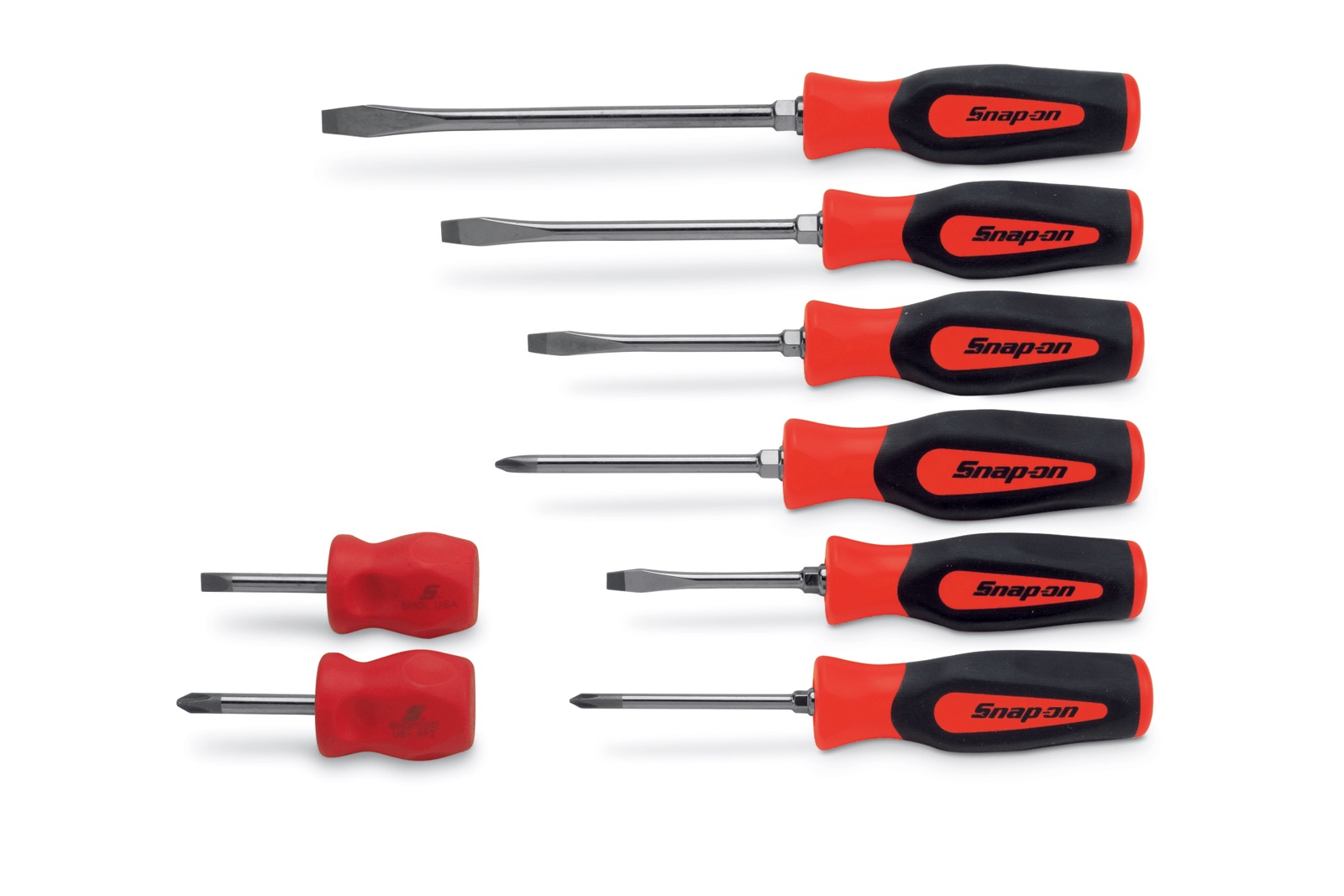


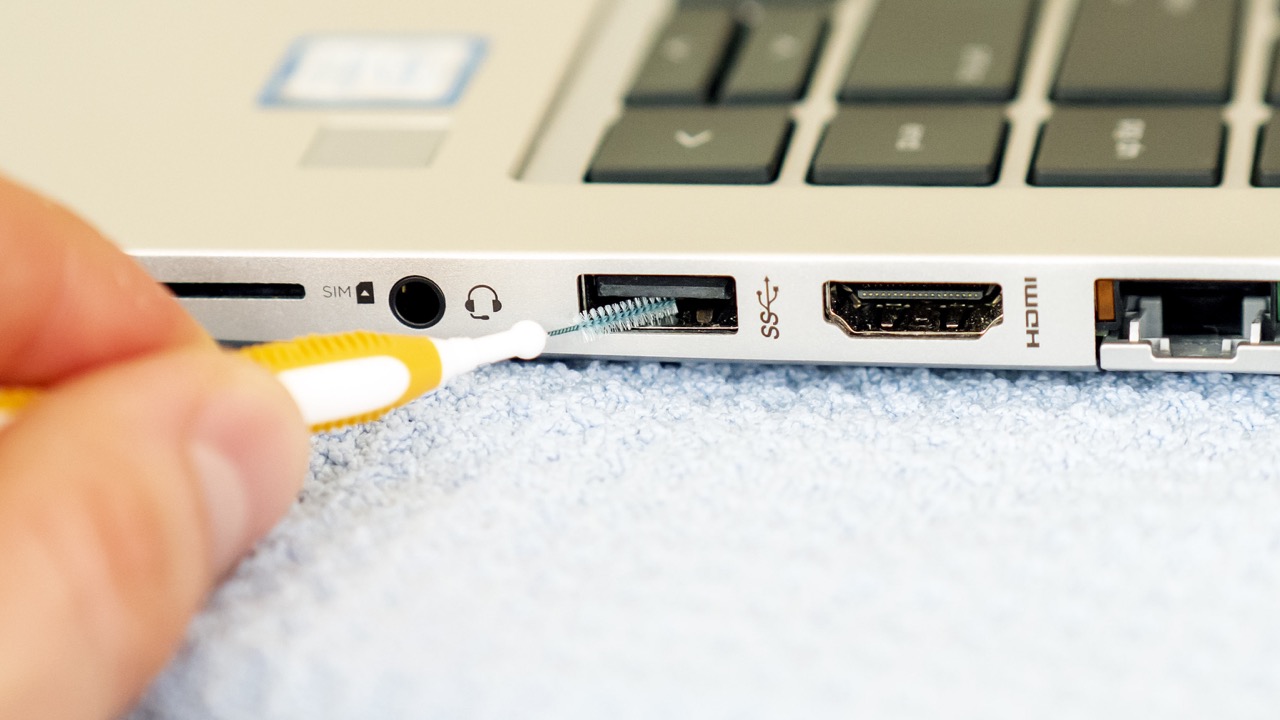
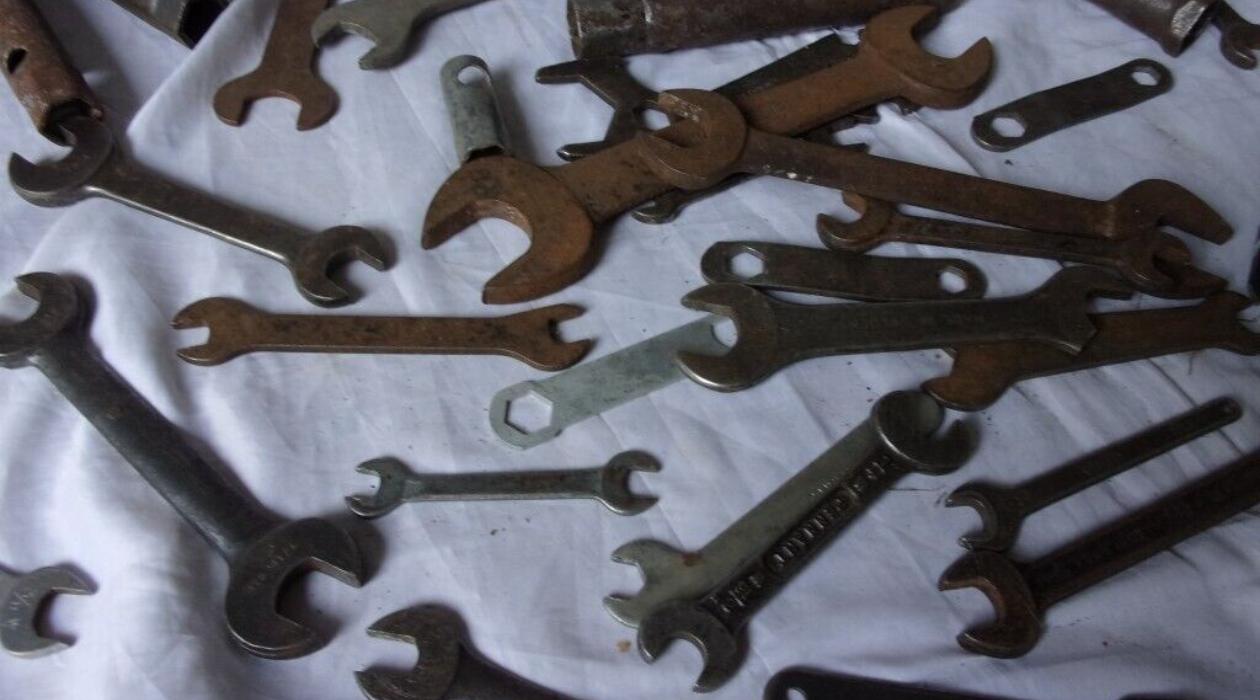



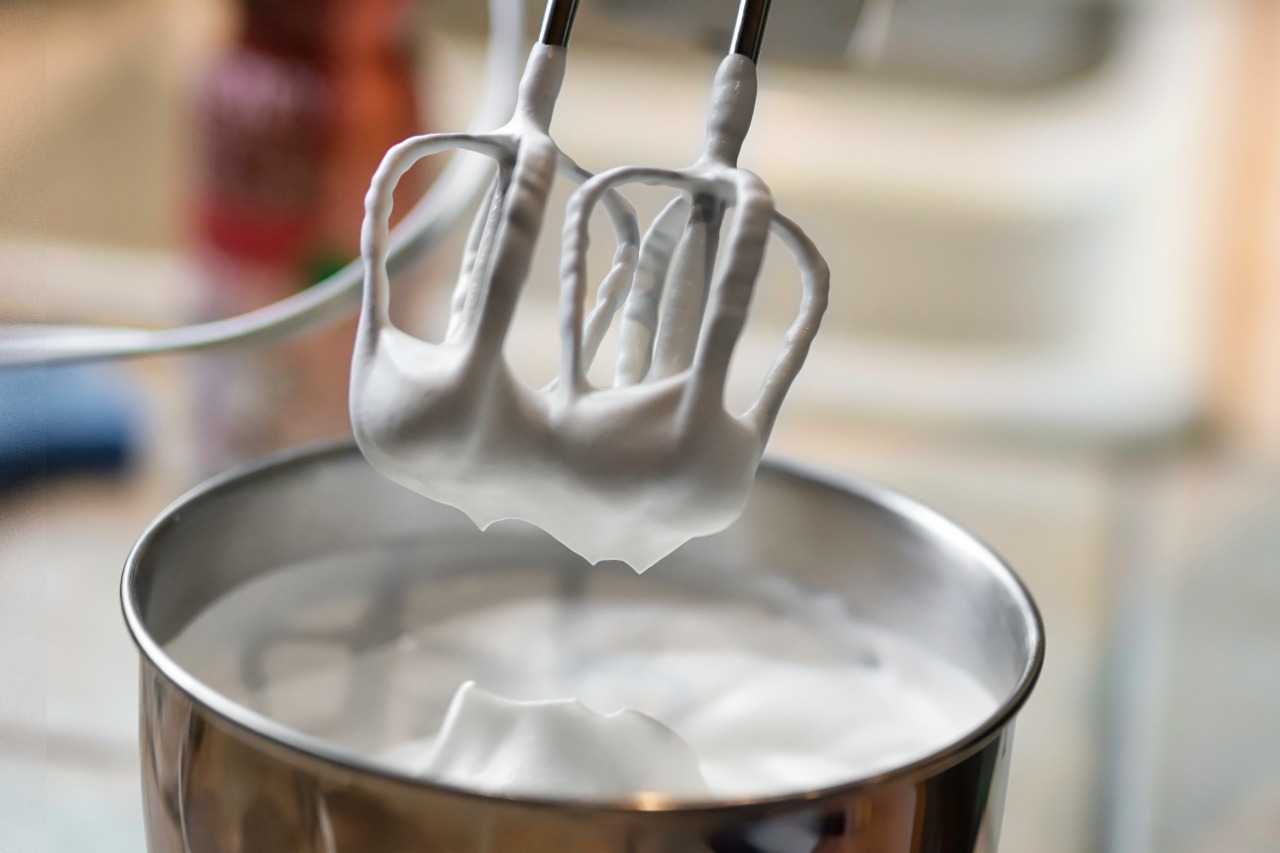


0 thoughts on “What Kind Of Oil Can You Use On Hand Tools”